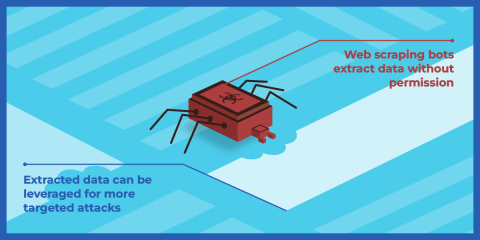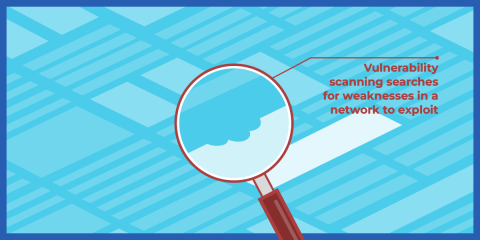
For infrastructure administrators tasked with ensuring the reliable operation of their applications, the thought of a lurking cyberattack can be one to lose sleep over. An attack on your system and the services you provide could result in a security breach, loss of data, or render your applications unresponsive.
Web Security Threats Definition
Website security threats are cyberattacks that target vulnerabilities in infrastructure and web applications to gain access to valuable data and credentials. Web security threats target three main categories:
Threats that target and attempt to gain access to private networks including home networks and business intranets.
Threats that target corporate and personal devices that are operating within a network.
Threats that target the infrastructure—both hardware and software—behind application delivery.
For the purpose of this blog post, we will focus primarily on threats that target application delivery infrastructure.
Threat vs Risk (Difference)
The main difference between a web security threat and a risk is that a threat is an external danger while a risk is a potential outcome a threat poses:
A website security threat targets vulnerabilities in a web application or API, the data it safeguards, and its availability. Threats can come in various forms, and without the right security in place, they can pose a danger to your applications.
A website security risk is the potential result of a malicious attack. While risks can be minimized through security solutions and tightly designed web applications, cyberattacks can succeed in making various risks a reality: data theft, admin access, and system unavailability.
Which Sector is Most Affected by Cyberattacks?
Sectors that handle personal information and provide essential services are some of the most vulnerable to cyberattacks.
Sectors at high risk include:
financial
health
education
Although cyberattacks are not limited to these targets, applications in these sectors are perceived to hold valuable information for criminals, and having the right security in place is critical for the safe exchange of data and money.
4 Types of Web Security Threats
The first step in preparing the right line of defense is knowing what to expect. Based on our clients, some of the most common website security threats are:
Web Scraping
Brute-Force Attacks
Vulnerability Scanning
Below, we explore these threats further and what to consider when building out your defenses.
#1 Distributed Denial-of-Service (DDoS) Attack

A DDoS attack is a malicious attempt to overwhelm a service by flooding it with traffic. The volume of traffic hitting the server becomes too much to bear, utilizing all of a system’s resources, network bandwidth, or the application’s capacity to provide a responsive experience. The result is the inability to deliver responses to clients, and the online services they provide are disrupted and sometimes inaccessible to the public.
There are three main types of DDoS attacks:
Volumetric attacks generate immense volumes of traffic to overwhelm a resource, saturating its bandwidth and blocking legitimate traffic from passing through.
Protocol attacks take advantage of protocol to overwhelm server and kernel resources at infrastructure endpoints like load balancers.
Application attacks target weaknesses in the application layer by flooding it with requests that appear legitimate and consume all of a system’s processing power.
While attackers often leverage one of these types of DDoS attacks, there is a growing trend of using multi-vector DDoS attacks against the same target. This more adaptive form of DDoS attack is an attempt to find ways around security measures, with the ability to change attack vectors once another vector is mitigated. Having multiple layers of defense against DDoS attacks is critical in this regard.
#2 Web Scraping

Web scraping can be understood as data extraction. With web scraping, a bot will typically scan a website for its information, take it, and store it elsewhere. This information can be used for data analysis and tracking, information compilation, or other nefarious reasons. Web scraping itself is not inherently malicious. It is considered a cyberattack when web scraping involves extracting data without permission. In the case of malicious intent, web scraping can put personal information and intellectual property at risk.
If we think of online data and personal information as property, web scraping is essentially taking assets that don’t belong to the attacker. It can involve stealing data critical to an organization’s success or identification information from users accessing a website. Ensuring this information is protected from these data-extracting bots is critical for your business operations.
Web scraping can also be another step in the larger goal of data theft, collecting publicly available information for a targeted attack. It does so by gathering information about a person, whether it is contact information, who they work for, or any other valuable data. This information is then used for a targeted attack such as spear phishing. If the right amount of information is collected, the attacker can disguise themselves and trick victims into clicking malicious links, leading them to download malware, along with further data theft.
#3 Brute-Force Attacks

A brute-force attack is a continuous attempt to guess login credentials and gain access to the protected areas of the application. This cyberattack runs through numerous possible username and password combinations to access information not available to the public. Once the attacker finds the right combination, they have access to the information they were searching for.
This form of cyber attack is the equivalent of trying to crack a combination lock. In this situation, the thief will try as many combinations as possible to open the lock and access the goods on the other side. Whether the combination lock consists of numbers or letters, combinations will be tested in different orders until one finally works.
It is essentially trial and error. When successful, the attacker can gain access to credentials, payment information, and even admin privileges for your application. Even today, brute-force attacks remain a dominant form of breach that results in losing information and credentials.
#4 Vulnerability Scanning

Vulnerability scanning involves inspecting a web application and its networks for any weaknesses. While vulnerability scanning can be used to recognize your own application’s weaknesses to improve your lines of defense, it can also be used against your business. These cyber attackers use vulnerability scanners to attempt to identify any weaknesses they can target and capitalize on.
With vulnerability scanning, information is collected about a network, the systems functioning within the network, their operating systems, software, and the services they provide. Any vulnerabilities that exist in your infrastructure will be a prime target for a cyberattack, using the weaker points in your security against you, and taking valuable data from your systems once infiltrated.
Larger businesses may seem like a natural target for vulnerability scanning when considering the wealth of information they hold, but smaller businesses are also at risk. Regardless of whether your operations are big or small, it’s critical that you have the right security in place to protect against data theft.
Related Articles:
How to Protect Yourself Against Web Threats
Adding HAProxy as another line of defense against these four threats offers enhanced security to your web applications. Operating between your infrastructure and potential cyber threats, our suite of security solutions stands on the front line of battle, bolstering some of the most advanced security features in the industry.
Single gateway. In upholding your system’s high availability, our load balancer technology acts as a single entryway for all traffic, making it easier to defend your servers from a single front, instead of defending each server individually.
Encryption and decryption. HAProxy offloads SSL termination to the load balancer at the edge of your network and makes configuring cryptographic algorithms easy. With the SSL certificate and keys being installed onto the load balancer, as opposed to backend servers, they are less likely to end up in the hands of attackers.
Scale horizontally against volumetric attacks. In order to increase bandwidth to withstand a volumetric attack, users can leverage either Global Server Load Balancing (GSLB) or utilize Anycast with HAProxy Enterprise’s Route Health Injection module to redirect traffic across data centers. The bandwidth saturation that volumetric attacks cause can be mitigated by HAProxy’s ability to scale out load balancers, manage traffic over multiple data centers, and leverage equal-cost multipath routing to create the bandwidth needed to handle the flood of traffic.
Protection against packet floods. With HAProxy ALOHA, we provide the industry-leading PacketShield to protect against protocol-based DDoS attacks, offering a powerful defense against packet floods. PacketShield filters and blocks illegitimate packets before they need to be processed, allowing services to stay operational while under attack.
Mitigate application layer DDoS attacks. HAProxy load balancers offer protection against application layer DDoS attacks, notably HTTP floods. Setting rate limiting in place and leveraging techniques that utilize access control lists, maps, and stick tables can enhance your security against these application-based threats.
Defense against bots. In saving bandwidth for real users, HAProxy Enterprise offers the HAProxy Enterprise Bot Management Module, the Global Profiling Engine, and client fingerprinting to ensure your services are protected from vulnerability scraping, brute-force bots, and crawlers.
Web application firewall (WAF). The next-generation HAProxy Enterprise WAF, powered by our Intelligent WAF Engine, offers protection against intrusions that utilize SQL injection, cross-site scripting, local file inclusion, and other attack types. HAProxy Enterprise WAF provides exceptional threat identification that virtually eliminates false negatives and false positives, along with the latency associated with WAF filtering. This next-generation WAF enables you to fight back against malicious clients seeking to exploit cracks in your APIs and web applications while minimizing resource use and keeping operational costs low.
For a deeper dive into securing your applications, read more about our security solutions and check out this video:
Why Website Security is Important for Business
“An ounce of prevention is worth a pound of cure” is a proverb that stresses the importance of prevention, and in the line of website security, it holds a lot of truth.
Safeguarding against security threats to websites is not only about seamless and reliable service, it’s also about business costs and profits. Unchecked website security threats can have various implications for your bottom line:
Reputational damage can lead to the loss of customers, both current and prospective, and in turn, leads to the loss of sales.
Threats can also damage relationships with business partners and suppliers, no longer holding trust in your operations and turning toward more reliable prospects.
The breaching of cybersecurity and privacy laws can also lead your business to incur high legal fees in trying to make amends with customers.
Stolen intellectual property can affect your business in the market, along with competition with competitors’ products and services.
Recap: Enhance Your Web Security
While some sectors are at higher risk because of the wealth of valuable data they hold, all businesses are at risk of a cyberattack.
When it comes to application delivery infrastructure, it is critical to ensure there are no cracks in your web applications and APIs. HAProxy offers security solutions to bolster defenses for your infrastructure against threats that include but are not limited to DDoS attacks, web scraping, brute-force attacks, and vulnerability scanning.
Regardless of the security solution you settle on, reducing potential risks as much as possible is a necessary measure to protect your services and business operations.
Subscribe to our blog. Get the latest release updates, tutorials, and deep-dives from HAProxy experts.



